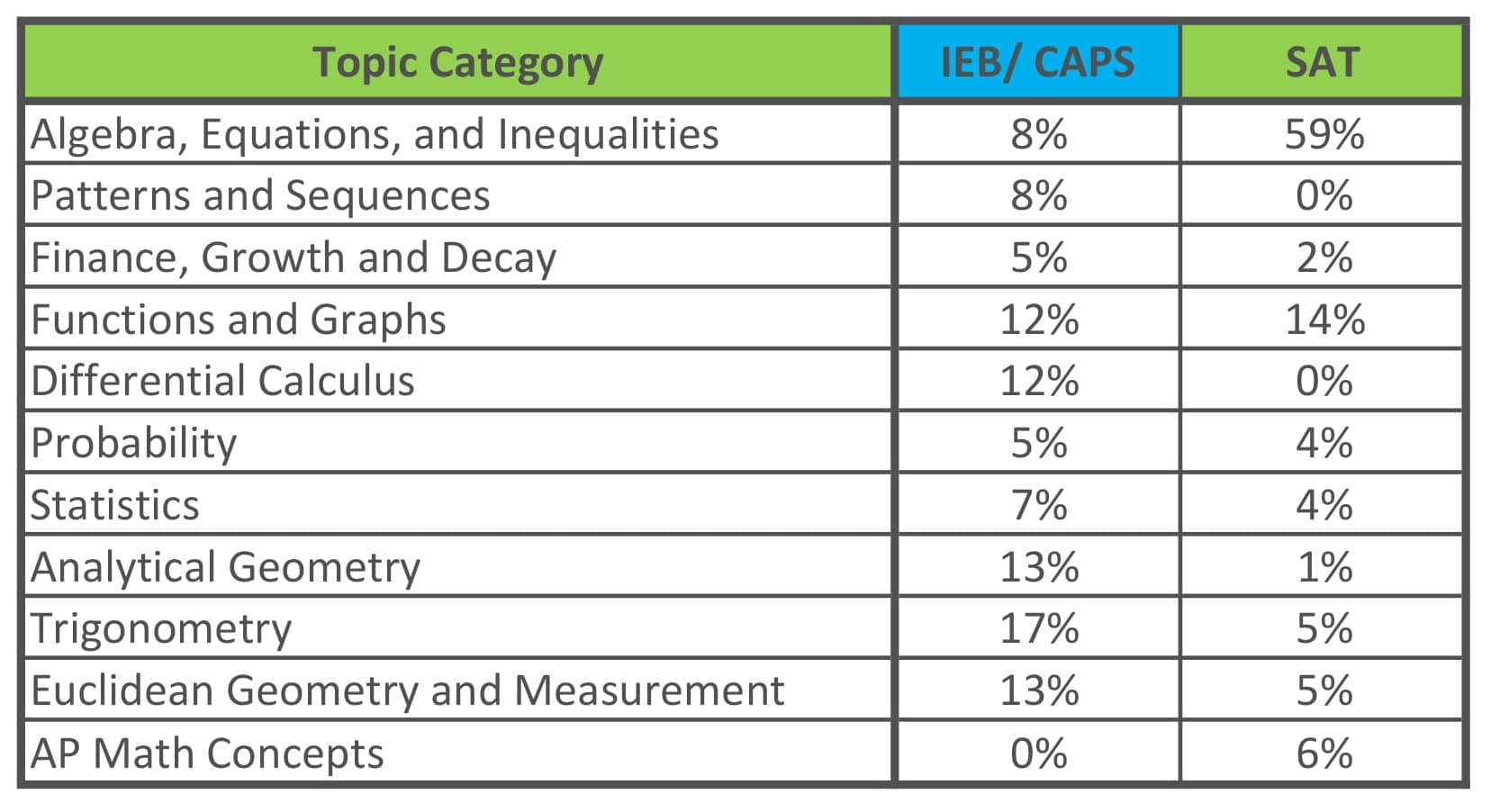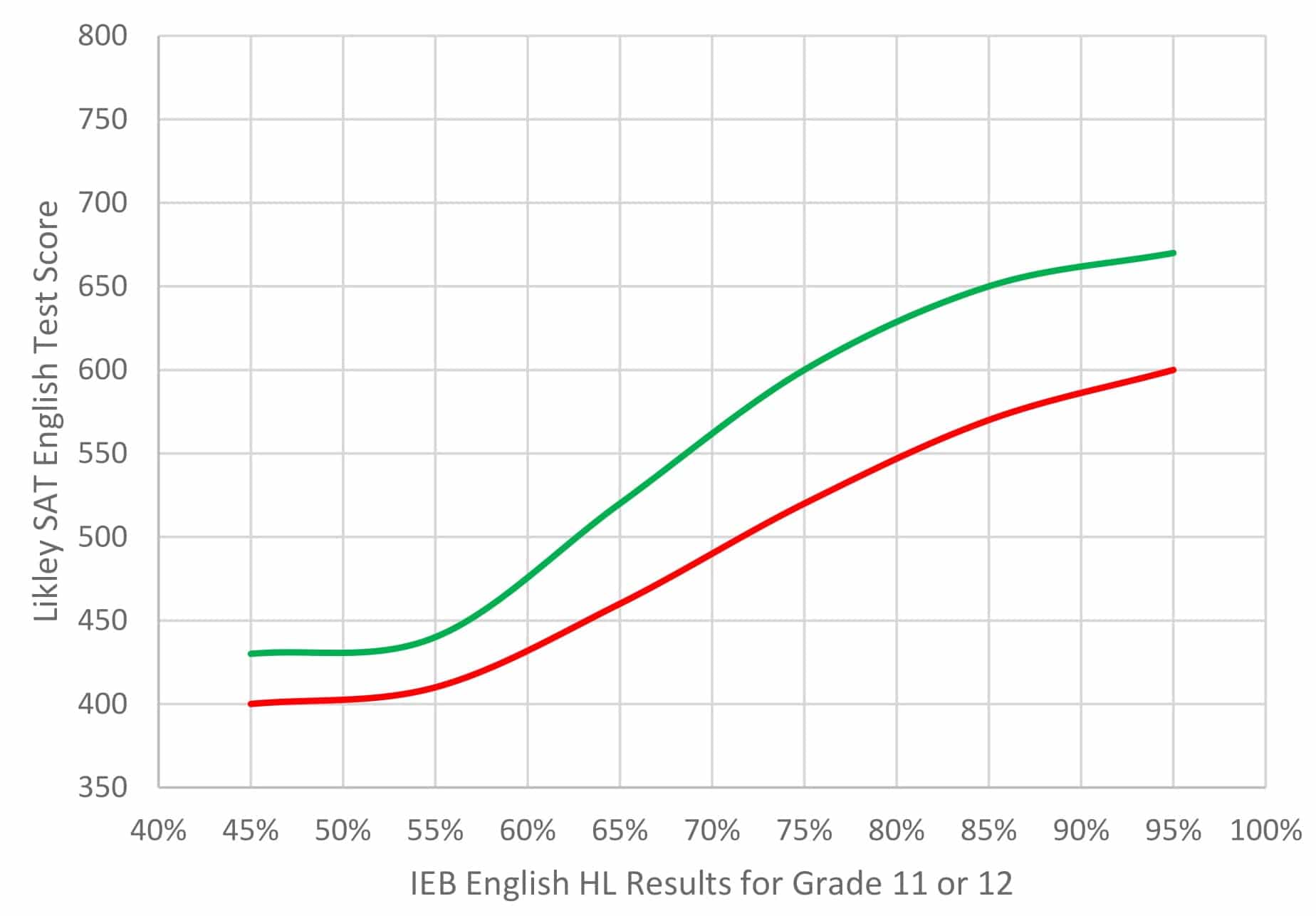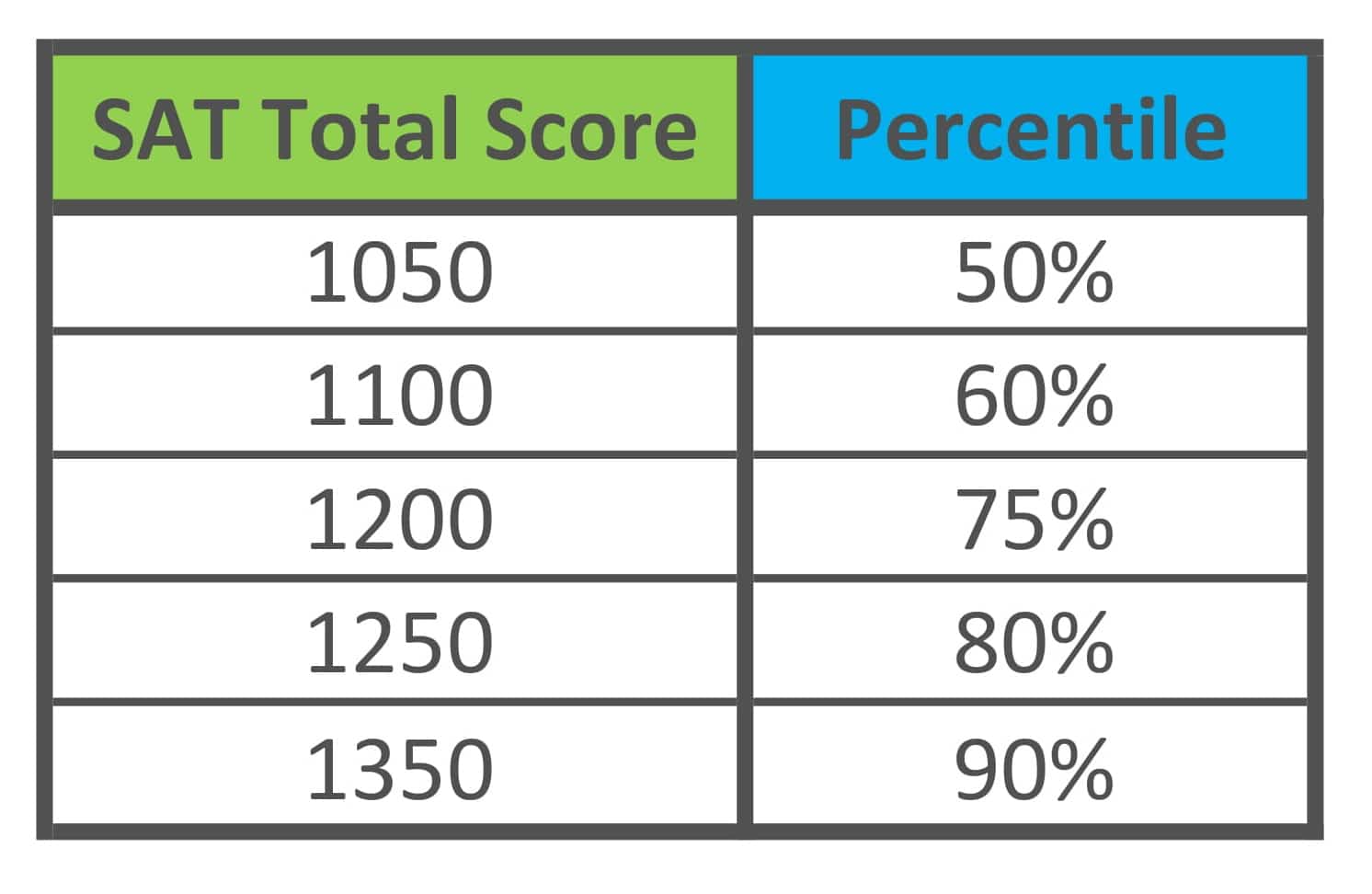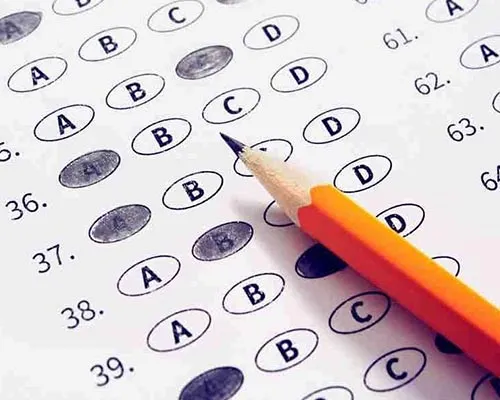Introduction to SAT
This article was written to provide an overview of the SAT for parents and students that will be studying in the United States, particularly coming from South African IEB and CAPS schools.
Quick Answers/Table of Contents:
Who is Genius Premium Tuition
We have been supporting students in South Africa since 1993. In that time, we have taught over 2800 students, helping them get into universities in the US and all over the world.
We hope to give you an overview of the SAT, when you need it, and how you can structure your studies to get a great SAT result – and therefore improve your chances of getting into (and being offered scholarships at) your desired institution!
1. What is the SAT?
The SAT is to American universities what the NBT is to South African universities – it is a standardised mathematical and literacy reasoning test that is added to your profile when applying to a university in the States.
SAT doesn’t stand for anything, although it used to stand for Scholastic Aptitude Test, and then Scholastic Assessment Test, and now just ‘SAT.’ You may also hear ‘SAT 1’, or ‘SAT Reasoning Test’ – these are all the same thing and refer to the SAT.
SAT Essay
The SAT Essay was an optional 50-minute essay that was offered as an add on to the SAT – this is no longer an option as of June 2021 – find out why.
SAT 2/ SAT II/ SAT Subject Tests
The SAT subject tests were separate assessments that were recommended (and sometimes required) for specific degrees at specific universities in the United States.
These included tests such as:
- Literature;
- US History;
- Math Level 2;
- Molecular Biology;
- Japanese;
- and many others.
These are no longer an option as of June 2021 – find out why.
Why do universities use the SAT?
There is a huge variety of curricula, subjects, and assessment standards across the world. This poses an interesting problem for admissions departments in the US and other countries around the world – how do they measure everyone in an objective and comparable manner so as to evaluate candidates fairly?
The SAT is used for a similar purpose to our South African NBTs. It is a convenient way for universities to rank and process applicants. Given the tens of thousands of applications received yearly, the SAT provides somewhat of an objective and comparable academic progress and potential score.
2. Why should I take the SAT?
There are many reasons why a South African student would take the SAT, we list a few below:
Studying in the USA
- Many universities require an SAT score
- Many universities that don’t require an SAT score still consider it as part of the student’s profile
- It improves scholarship opportunities through organisations such as the NCAA
Studying internationally
- Many universities all over the world require an SAT
- Many that don’t, still consider it as part of the student’s profile
- Most commonly, these include universities in Canada, Europe, and Israel
Studying in South Africa
- If, instead of an NSC matric, you obtain a GED matric equivalent or similar, you will probably be required to write the SAT as part of your portfolio to be considered for university entrance in South Africa.
Becoming an SAT tutor at Genius Premium Tuition
- If you are applying to work as an SAT tutor at Genius, you will be required to write and score exceptionally in, an SAT.
3. What does the SAT cover?
The SAT is divided into two main sections:
- English (Evidence-Based Reading and Writing)
- Math
Each section is further broken into two subsections, resulting in 4 SAT sub-tests:
English
- Section 1: Reading
- Section 2: Writing
Math
- Section 3: No-Calculator
- Section 4: Calculator
Reading – 65 minutes
This test consists of 4 stand-alone passages, each with 10 to 12 multiple-choice questions, and a set of paired passages, with 10 to 12 of its own multiple-choice questions.
In total, you are treated to 6 passages and 52 questions.
One or more of the passages might be accompanied by a graphic, like a chart, bar graph, or scatterplot. These passages will typically ask data interpretation questions that relate to the graphic.
The passages will all fall into one of these 3 categories:
- US and World Literature: 1 stand-alone passage.
- History/ Social Studies: 2 stand-alone passages, or 1 stand alone and 1 paired-passage set.
- Science: 2 stand-alone passages, or 1 stand-alone and 1 paired-passage set.
Each passage, or set of paired passages combined, will have about 500 to 750 words.
It is important to note that these passages, and the question framework, are very different (and much more difficult) from the kinds of reading and questions that IEB or CAPS students are exposed to in South Africa.
Writing – 35 minutes
This test consists of 4 stand-alone passages, each with 11 multiple-choice questions.
In total, you will respond to 4 passages and 44 questions.
The passages will all fall into one of these four categories:
- Careers: Discuss trends or debates in major professional fields, like medicine, technology, or business.
- Social studies: Draw from history, anthropology, psychology, political science, or sociology.
- Humanities: Feature an author or explore trends in literature or the arts, including prose, poetry, art, music, or dance.
- Science: Focus on topics in earth science, biology, chemistry, or physics.
Each passage will have about 400 to 450 words.
All of the passages will either be argument-based, nonfiction, or explanatory. At least one passage will be accompanied by a graphic – like a chart, table, or graph.
The Writing and Language section tests your editorial skills – these passages are riddled with errors in structure, punctuation, word choice, and organisation.
It is important to note that the expected command of language rules and editorial skills is far more substantial than what is included in the IEB or CAPS curriculum, and what’s more – the rules are tested in the Standard American English framework – in contrast, in the IEB and CAPS curricula, when we are taught language, it aligns with the Standard British English framework.
Maths: No Calculator – 25 minutes
This test consists of 20 questions. The first 15 are Multiple-Choice Questions and the last 5 are Grid-ins (you calculate an answer – for example, 3.14 – and fill this out on your answer sheet).
You have roughly 75 seconds to read, interpret, calculate and answer each question.
The No Calculator test only tests questions from the “Heart of Algebra”, “Passport to Advanced Math”, and “Additional Topics in Math” sections.
We did a technical analysis of 20 SAT past papers, and it is clear that of the 15 sub-sections that are covered in the No Calculator Section, about 72% of the questions fall into the following five:
Heart of Algebra
- Linear Equations
- Interpreting and Graphing Linear Functions
- System of Equations
Passport to Advanced Math
- Quadratic Equations
- Interpreting Non-Linear Functions
The No Calculator section only counts for a third of your total Math score.
What kind of Math will I be expected to do in my head?
The Math No-Calculator section won’t ask you to do long, complex calculations out by hand and is really more about reasoning and problem-solving abilities.
There will still be some arithmetic – basic adding, subtracting, multiplying, and dividing. This test will check that you understand fundamental math concepts and don’t only rely on a calculator to reach a solution.
Maths: Calculator – 55 minutes
This test consists of 38 questions. The first 30 are Multiple-Choice Questions, and the last 8 are Grid-ins (you calculate an answer – for example, 2.72 – and fill this out on your answer sheet).
You have roughly 87 seconds to read, interpret, calculate and answer each question.
The Calculator test contains questions from the “Heart of Algebra”, “Passport to Advanced Math”, “Additional Topics in Math”, and “Problem Solving and Data Analysis” sections.
We did a technical analysis of 20 SAT past papers, and it is clear that of the 22 sub-sections that are covered in the Calculator Section, about 68% of the questions fall into the following nine:
Heart of Algebra
- Linear Equations
- Interpreting and Graphing Linear Functions
- System of Equations
Problem Solving and Data Analysis
- Rates, Ratios and Proportions
- Percentages
- Unit Conversions
- Tables and Probability
Passport to Advanced Math
- Quadratic Equations
- Exponents Radicals, Polynomials & Rational Expressions
The Calculator section counts for two-thirds of your total Math score.
4. SAT Math compared to IEB & CAPs Math
The IEB/ CAPs syllabus is typically divided into ten main categories:
Paper 1:
- Algebra, Equations, and Inequalities
- Patterns and Sequences
- Finance, Growth and Decay
- Functions and Graphs
- Differential Calculus
Paper 2:
- Probability
- Statistics
- Analytical Geometry
- Trigonometry
- Euclidean Geometry and Measurement
Here is a table comparing how important (by mark weighting in matric finals) each of these are in the IEB syallabus, and how important (by mark weighting in exam) they are in the SAT:

Note that this is a rough estimate; the SAT and IEB category weightings vary from sitting to sitting, and many SAT sub-sections could fall into one category or another: specifically, some of the questions we have assigned to ‘Algebra, Equations, and Inequalities’ could arguably have been assigned to Patterns, Sequences, or Growth.
You can see here that there is a huge misalignment between the two exams: the SAT places an overwhelming emphasis (73%) on Algebra, Equations, Inequalities, Functions and Graphs – whereas these topics only account for 20% of IEB Mathematics Syllabus.
In what grade will I have covered all the content necessary for the SAT?
Once you have finished Algebra, Equations, Inequalities, Functions and Graphs in Grade 11 in an IEB or CAPS school, you are just about good to go. In Grade 12 there are very few concepts taught in these categories that will help you with the SAT.
What about AP Maths?
As you can see from the table above, AP math concepts only account for 6% of the SAT – but the vast majority of these questions are “Complex Numbers” and “Absolute Values” – these are not big topics and the necessary content is relatively easy to learn.
SAT math sounds easy?
We didn’t mean to give you that impression. The fact there are very few concepts taught in Grade 12 that will help you with the SAT does not mean that your Grade 11 Math will prepare you adequately for this exam.
Although you will have learned many of the necessary fundamental skills, the expectation placed on students writing the SAT to synthesise, evaluate and apply their knowledge is very different from that in the IEB.
In addition to this, you are competing in an international arena with millions of students who have put in the time to learn how to play the game of the SATs – applying and using advanced Exam, Time Management, and Multiple-Choice Examination Techniques.
You can see how students tend to do (based on their IEB marks) in their first SAT write later in this article.
5. How does the Scoring work?
Unlike IEB exams, the SAT score is not a direct result of what percentage of questions you got right or wrong.
First, the basics:
Both English and Maths in the SAT are scored on a scale of 200 to 800, meaning you obtain a total score on a scale of 400 to 1600 (that’s said sixteen hundred, not one thousand six hundred).
The scores go up in increments of 10: 1080 is a possible score for the SAT, 1085 is not.
There is no negative marking which means you cannot lose marks for writing in the wrong answer.
How is the score calculated?
The number of marks obtained in each sub-test is calculated and then looked up on a conversion chart*, hence your score is obtained.
For example, in math: 0 marks convert to 200, and 58 marks convert to 800. 57 marks often also convert to 800 – depending on the sitting – so it is possible to get a perfect SAT math score without getting all the questions right!
*Each conversion chart is unique to that specific SAT set; you cannot use one SAT’s chart to grade another SAT.
For more details on how to mark the SAT test, check out this PDF.
Why is the scoring so messy?
The scoring works like this so that after every test, the College Board can grade to a curve. Raw scores (number of correct answers) are mapped to SAT scores in such a way so that no matter how difficult or how easy a particular SAT is, a 640 on one SAT means the same thing as a 640 on another.
For example, in an easy test, 39/58 on the Math might equate to a 660 – and on a harder test 34/58 could also yield a 660. The scoring charts are curve-adjusted.
For more details on what ‘grading on a curve’ means, click here.
What is Super-Scoring?
Many universities will accept a super score of all your official SAT scores. For example, if in May of 2020 you scored 1100 (600 for Math and 500 for English), and then in March of 2021 you scored another 1100 (but this time with 500 for Math and 600 for English), your best English is 600, and your best Math is 600, and so you are considered to have scored 1200 in the SATs.
This is a list of some (not all) of the universities that super score SATs.
Guessing
If you don’t fill in the test, you will score a 400 on the SAT. If you fill it in randomly, there is an 80% chance that you will score anywhere between:
- 350 and 470 for the Math
- 320 and 400 for the English
Overall, there is an 80% chance that you will score between 680 and 860 for the SAT.
Going in Blind?
Over the last 28 years, Genius has assessed hundreds of SAT students. Part of our assessment process includes having them write an SAT as a baseline – this means we have hundreds of data points of students’ performance in the SAT. What follows are some insights gleaned from the data set:
Mathematical Literacy
It didn’t matter if students were in CAPS or IEB, at the beginning of Grade 11 or end of Grade 12, or if they were getting 40% for Mat Lit or 95% – all of our Math Lit students who wrote the SAT scored between 400 and 460 for the Math Test before any SAT-specific preparation.
English FAL
It didn’t matter if students were in CAPS or IEB, at the beginning of Grade 11 or end of Grade 12. The English FAL mark to SAT English showed a reasonable correlation (with an R² of 41%, for the math nerds)
- C students generally scored 440
- B students generally scored 480
- A students generally scored 520
- A+ students generally scored 560
Math Core
Grade:
Although students at the end of Grade 12 tended to perform, on average, 20 points better than students at the end of Grade 11, the Grade and Term barely correlated the SAT Math score (R² of 2%).
Result:
It didn’t matter if students were in CAPS or IEB, at the beginning of Grade 11 or end of Grade 12. The Math mark to SAT Math showed a reasonable correlation (with an R² of 51%)
The following is based on students from mid-Grade 11 to Grade 12:

Without SAT-specific preparation – and on their first write:
- F students typically scored between 430 and 480
- E students typically scored between 430 and 480
- D students typically scored between 510 and 560
- C students typically scored between 560 and 600
- B students typically scored between 560 and 600
- A students typically scored between 570 and 660
- A+ students typically scored between 610 and 700
Interestingly, for the same results, CAPS students did not seem to perform worse than IEB students.
English HL
Grade:
As with Math, students at the end of Grade 12 tended to perform, on average, 20 points better than students at the end of Grade 11. The Grade and Term also barely correlated the SAT Math score (R² of 3%).
Result:
It didn’t matter if students were in CAPS or IEB, at the beginning of Grade 11 or end of Grade 12. The English HL mark to SAT English showed a reasonable correlation (with an R² of 49%)
The following is based on students from mid-Grade 11 to Grade 12:

Without SAT-specific preparation – and on their first write:
- E students typically scored between 400 and 430
- D students typically scored between 400 and 430
- C students typically scored between 460 and 520
- B students typically scored between 520 and 600
- A students typically scored between 570 and 650
- A+ students typically scored between 600 and 670
Interestingly – just as with the Math – for the same results, CAPS students did not seem to perform worse than IEB students.
Total SAT results
The following is a graph that shows the range of expected SAT scores based on an IEB Grade 11 or 12 average result for Math and English HL:

Without SAT-specific preparation – and on their first write:
- F students typically scored between 830 and 910
- E students typically scored between 840 and 920
- D students typically scored between 920 and 1000
- C students typically scored between 1010 and 1120
- B students typically scored between 1080 and 1210
- A students typically scored between 1140 and 1310
- A+ students typically scored between 1210 and 1370
What is a good score for the SAT?
You now know the lower limit for Math is about 470, and the lower limit for English is about 400.
You also know that, depending on your IEB results, you are likely to score 400 to 650 for English and 510 to 660 for Math.
Now we can start to think about what a ‘good score’ is.
Percentiles are a really useful way of thinking about how ‘good’ a score is – much better than percentage.
For example, if a learner scores 2/10 on a math test, that’s 20% – bad, right? What if the learner is in grade 7 and it is an MIT Advanced Math challenge test? Maybe 2/10 wasn’t so bad after all. Can you see how percentage on its own is not a useful measure of achievement?
Instead, we can ask the question, “What percentage of students in his class did he outperform?” The answer to this is his percentile. In this case, it is conceivable that 98% of the students in his class scored 0 or 1 out of 10, and so because he scored better, he is in the 98th percentile.
This table should give you a sense of how ‘good’ each of the following SAT scores are:

Click here to see a more detailed chart.
What score do I need?
Instead of aiming for a university’s ‘minimum accepted SAT score’, it is useful to benchmark the SAT score you need to get against the average SAT score of students who have already been accepted at that university.
For example, 75% of students accepted at UCLA get an English SAT score of 670 or higher, and 25% get 760 or higher!
For the Math SAT score, 75% of students accepted at UCLA get 690 or higher, and 25% get 790 or higher!
This means that, depending on your GPA, and other admission factors, you should aim to score around a 700+ for English and a 730+ for Math.
You can find most universities’ SAT requirements with a quick Google search (for example, ‘UCLA SAT requirement’).
Keep in mind that the SAT is only half the story, your GPA is just as important. Find out more here.
6. When and Where can I take the SAT?
In the United States, students are typically prepared for their SATs by their schools – and this preparation often starts as early as Grade 9.
Recommended SAT Timeline
When thinking about when to start practising for, and writing, your SATs, you are balancing a couple of things:
- You don’t want it to interfere with your matric finals; or really any big exams (such as Grade 11 finals or Prelims).
- You don’t want to waste time learning content before you have learned it at school
- You want to write multiple times to take advantage of super scoring.
- You want good scores relatively early in order to apply to universities.
With all of this in mind, we recommend you start preparing for your SATs in Grade 10.
You should then aim to write your first SAT in the middle of Grade 11, and ideally your final one towards the end of Grade 11 – then, if you don’t get the score you want, you can take one or two at the beginning of matric.
How many SATs can I write?
No universities will penalise you for writing multiple times (in fact, the average university student in the US wrote the SAT between 2 and 3 times). The CollegeBoard, and the universities, encourage you to take it multiple times in order to get the best score possible for you.
Available SAT sittings in South Africa
This varies from year to year, but it is common to for SATs to be hosted, in South Africa, on the first weekend of each of the following months:
- March
- May
- June
- August
- September
- October
- December
Find a list of upcoming sittings here.
Where can I write it?
You can find a comprehensive list of available test centres here.
Here is an overview of some of the popular test centres:
Gauteng
- University of the Witwatersrand
- American International School of Johannesburg
- St. Benedict’s College
KwaZulu-Natal
- Hilton College
Cape Town
- Somerset College
- Herschel Girls School
Eastern Cape
- St Andrew’s
Free State
- Bohmer Secondary School
Registering for the SAT
You can register for SATs up to a month in advance of the test date, and in some cases even later – up to two weeks in advance when late registration is available.
The SAT costs R1000 to R1500, depending on which options you choose.
Register to write your SAT here.
Time Concessions for the SAT
The SAT does accommodate students who need time (and other) concessions. You can find out more here.
7. How Can I Prepare?
There are different types of practice and preparation for the SATs, and we like to think about practice as falling along the following spectrums:
- Practice can be long term or short term;
- Practice can be content or technique based;
- Practice can be absorbing or applying;
- Practice can be exam-emulation or relaxed.
Long Term vs Short Term
If your SAT is in less than five months, all the practice you do will be short-term practice, wherever it falls on the other dimensions.
For example, long-term learning for the English test includes making it a habit to read SAT Reading level content daily or weekly, starting months or years in advance.
If you are in Grade 9 or 10, and you want a highly competitive SAT score, you should start engaging in long term practice.
Content vs Technique
A student who knows and understands 100% of the content can still be out-competed by someone who knows less but has better SAT test-taking techniques.
Content practice is about learning the rules, structures and concepts in Math and English – becoming a more competent reader, writer, and mathematician.
Technique practice is about employing strategies to get a better score, given the length and format (mostly multiple-choice).
You should aim to get in most of your content practice before delving into high-level examination techniques – unless you are doing this all last minute, in which case you should balance both.
Absorbing vs Applying
Applying is a crucial step in the learning process; practising questions and solving problems is a great way to identify your blind spots and find out if you actually know something you think you do. Applying includes doing practice questions, working through problems, and writing practice exams.
Absorbing is a different, often overlooked, way to learn. This is all about reading content, watching videos, explaining concepts to yourself or to others, and mapping out your knowledge. If you balance applying with an ample amount of absorbing, you will perform much better in the test.
Exam Emulation vs Relaxed
Relaxed practice includes any practice where there is not an appropriately narrow time window in which to complete the task. This is crucial and is where much of the learning will occur. This includes working through past papers, watching videos, doing practice questions, etc.
Exam Emulation is something most students avoid, but it has a huge impact on the learning process and ultimately on your final result.
Exam Emulation is the specific act of working through an actual past paper, under exam conditions (closed book and timed) – preferably in an unfamiliar and uncomfortable environment – and then getting feedback from the test in the form of a test diagnostic (also called an exam autopsy: hopefully not!).
You should absolutely include Exam Emulation in your learning process – it is a great opportunity to actually learn and solidify content and exam techniques.
Practice Tests?
The SAT has ten* official practice tests – designed to be no different from an official SAT than another official SAT would be.
*Tests 2 and 4 were removed from the official suite because they didn’t quite match the standard, making it really only eight.
These are a great opportunity, and should not be used for casual, relaxed practice.
Ideally, all of these should be used for Exam Emulation practice.
Where to find the best SAT resources?
There is a wealth of learning materials in the form of textbooks, videos and practise questions and tools available online. Students and tutors who come through our programme have sampled much of this. Based on their feedback, in conjunction with our SAT training programme, we always recommend:
Practice websites:
Text Books:
Premium, Private Tuition for Gauteng students:
- Genius Premium Tuition
8. Is the SAT my Only Option?
No, in most cases where an SAT is required, the ACT will be accepted in its place. There is plenty of content available online on the differences between the SAT and ACT, and so we won’t get into it here.
Although there are niche cases where an IEB/ CAPS student could have a competitive edge, in most cases, we recommend the SAT.
What other entrance requirements are there?
In addition to the SAT score, students are also measured by their high school results, which are often converted to a GPA. You can find out more about the GPA here.
9. SAT Support
Grade 10 is a good time to start thinking about all of this. If you plan on getting a high SAT score, you should plan out your study schedule and exam dates in advance. You need to get an SAT score to match the degree and institution you are aiming for.
That’s where we come in. We have a sophisticated SAT diagnostic that splits the SAT into 37 discreet sub-sections and identifies content and technique strengths and weaknesses.
As part of our assessment process, we can also provide guidance and advice in terms of university options and SAT and GPA planning.
We then fill in those gaps systematically through premium, one-on-one tuition with our trained in-house team of tutors. This can be done online or in person.
Why Choose Genius?
Genius has been supplementing the school system and preparing students for their SATs and entrance into international universities for 28 years.
We are not a just tutoring agency; our team of tutors are in-house instructors who have been through a very rigorous vetting and training programme, and we work very closely with them, the school, and your family over the duration of the course to ensure a great result.
Here are some of the things that parents have said about our programme:
- The assessment process is convenient and pain-free.
- The lessons happen at a time that suits you, even if that means mornings or weekends.
- These are one-on-one lessons that happen in your home or online.
- You will improve your SAT.
- You will, therefore, have access to a bigger pool of universities to choose from.
- Once your kid gets there, they will be well-positioned to excel academically.
Find out more about our SAT Training programme, or see what our parents have to say.
Frequently Asked Questions
1. What is the SAT, and why is it important for IEB students?
The SAT is a standardised test used by American universities—and many international universities—to assess a student’s readiness for college. For IEB students, it serves as an additional academic benchmark, complementing school results and enhancing prospects for admission and scholarships abroad.
2. Who is Genius Premium Tuition, and how do they support SAT preparation?
Genius Premium Tuition is an educational support service that has been assisting South African students since 1993. They offer personalised SAT preparation, which includes one-on-one tutoring, diagnostic assessments to identify strengths and weaknesses, and tailored coaching to address specific needs.
3. Why should I, as an IEB student, consider taking the SAT?
Taking the SAT can open doors to various opportunities, such as:
- University Admission: Many universities, especially in the USA, require or consider SAT scores during the application process.
- Scholarship Opportunities: A strong SAT score can enhance your eligibility for scholarships, including those from organisations like the NCAA.
- Global competitiveness: it provides a standardised measure that can set you apart in the international applicant pool.
4. What does the SAT cover, and how is it structured?
The SAT comprises two main sections:
- Evidence-Based Reading and Writing (EBRW): Assesses comprehension, vocabulary in context, and editorial skills through reading and writing sub-tests.
- Math: Tests understanding of algebra, problem-solving, data analysis, and some advanced math concepts, divided into no-calculator and calculator sections. Each section is scored on a scale of 200 to 800.
5. How does SAT scoring work, and what is super-scoring?
- Scoring: Raw scores (correct answers) are converted into scaled scores using specific conversion charts. There’s no penalty for incorrect answers.
- Super-Scoring: Many universities consider the highest section scores across multiple test dates, combining them for a composite “super score.”
6. When and where can I take the SAT in South Africa?
The SAT is typically offered multiple times a year in South Africa, with test centres in major cities like Johannesburg, Cape Town, and Durban. Specific dates and locations can be found on the College Board’s official website.
7. How should I prepare for the SAT as an IEB student?
Preparation strategies include:
- Content Mastery: Focus on the core topics emphasised in the SAT, such as algebra and critical reading.
- Practice Tests: Utilise official SAT practice tests to familiarize yourself with the format and question types.
- Professional tutoring: Consider enrolling in specialised SAT training programs, like those offered by Genius Premium Tuition, for personalised guidance.
8. Is the SAT my only option for university entrance exams?
No, another widely accepted test is the ACT. However, the SAT is globally recognised and often preferred because of its alignment with international curricula.
9. How does SAT Math compare with IEB/CAPS Math?
While there is some overlap, SAT Math places a stronger emphasis on algebra and problem-solving skills. IEB/CAPS students might need additional practice to adapt to the SAT’s specific question styles and time constraints.
10. Are there any special accommodations available for the SAT?
Yes, students with documented disabilities can apply for accommodations, such as extended time or additional breaks. It’s essential to apply well in advance through the College Board’s official channels.
You can book an assessment by heading over to our contact page, or reaching us directly on sat@geniuspremium.com, or +27 11 467 9884.


